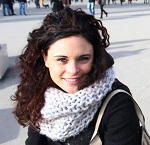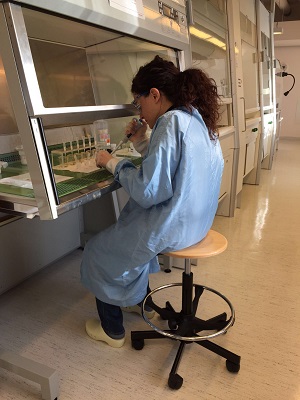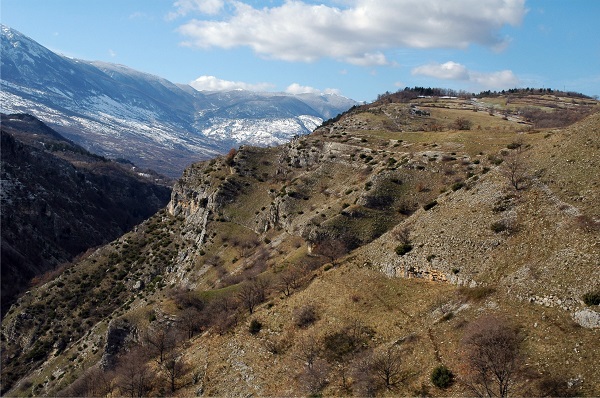Irene Cornacchia

Department visited
Geosciences
How long are you staying at the museum, and what are working with?
I am staying at the museum for two weeks. My host is Professor Per Andersson, but I am mostly working with Karin Wallner in the clean chemistry laboratory and Hans Schӧberg at the mass spectrometer.
My research aims to identify how carbonate platforms, as examples of shallow water depositional environments, within the Central Mediterranean area, responded to huge global climatic events that occurred between 34 and 13 million years ago. My aim is to understand, in particular, how these climatic changes affected the carbon cycle and the atmosphere-hydrosphere system in the deep past.
What is the major objective of your stay?
To use sophisticated geochemical techniques to obtain a suite of isotopes (87Sr/86Sr) from selected pectinid samples using mass spectrometry. The obtained Sr isotope ratios will allow me to age-constrain the carbonate successions I am studying, therefore to correlate the carbon cycle perturbations recorded in the Mediterranean area to the global ones in the time interval I am interested in.
What attracted you to apply for a SYNTHESYS grant to visit NRM?
SYNTHESYS is a great opportunity for PhD students or young researchers to get to use facilities they do not have in their own institution. And this is indeed the very first reason why I applied to NRM, to perform isotope geochemical analysis and get some results which I need to fulfill my PhD objectives. Moreover, I do believe that travelling and seeing how other foreign people work is always a very valuable and formative experience.
Which university are you from, and what is your daily work there?
I am a second-year PhD student at the Sapienza University of Rome.
What is your experience of the department so far?
Despite the fact that the Department of Geosciences is quite small, at least in comparison to my home institution, they have lots of facilities and labs. The atmosphere is very relaxed and warm and I do think this is a very nice place to work in both for scientific and “non-scientific” reasons.
Did you have time to look around in Stockholm?
I had a full week-end to visit Stockholm, and despite the cold, which I am not really used to, I really loved it. I went to Gamla Stan to see the old town, to Sӧdermalm and to the City. I loved the sightseeing from Sӧdermalm, and the narrow streets of Gamla Stan, but what I did like most is Djurgården! I took a walk on the bank side of the half-iced channel and the light was impressive and the atmosphere was really calm and still: I loved it! Lastly, I went to the Vasa Museum, which is definitely a must for anybody that comes to Stockholm!

Irene Cornacchia in the clean chemistry lab, Department of Geosciences.
Project Summary
The early to middle Miocene is a key interval to understand present-day and future climate evolution of the earth. The early Miocene oxygen isotope record indicates a trend of global warming which culminates in the Mid-Miocene Climatic Optimum, when mid-latitudes deep-water temperatures are estimated to be as much as 6°C higher than today.
This climatic change affected the global carbon cycle. The δ13C record, in fact, shows, during the middle Miocene, a positive C-isotope shift, known in literature as Monterey Carbon Isotope Excursion, related to an increased surface-water productivity. The Monterey event has been widely studied in open ocean settings, while little is known about the answer of shallow-water carbonate systems. The influence of C–cycle perturbations on the carbonate-producing biota is now widely accepted. An increased productivity in platform settings can trigger a carbonate production demise, inducing, eventually, drowning events.
The best signal of the Monterey event in a Mediterranean shallow-water carbonate succession is recorded in the Bolognano Formation (Majella Mountain, Central Apennines) and in the Bryozoan and Lithothamnion Formation (Central Apennines). In both these platforms the δ13C peak is marked by the onset of a bryozoan-dominated facies over a benthic foraminifera-dominated one. Unfortunately, the latter succession lacks of biostratigraphic markers, thus the different spikes of C-isotope curve are not well age-constrained and the only possible solution to date them lies in the Sr-isotope stratigraphy.

Orfento Valley in the locality of Decontra (Majella Mountain, Central Apennines, Italy).


